
When learning a foreign language, familiarizing yourself with the key vocabulary and grammar points is important. But there’s more to communication than speaking!
Body language is equally important.
In this article, you’ll learn the most popular ways to express yourself nonverbally in Polish society. We’ll introduce you to several Polish gestures and facial expressions you should remember for your upcoming visit or move.
 Table of Contents
Table of Contents
1. Body Postures
In general, body language in Polish culture is similar to that of other European cultures. For instance, Poles and other Europeans express things like agreeing and disagreeing using the same head gestures. That said, there are certain postures and gestures that are quite specific to Poland.
A- Expressing Impatience

Polish people occasionally express impatience or say “I told you so,” by putting their hands on their hips. This body posture exists in other countries too, but sometimes it expresses other feelings.
B- Slavic Squat

A Slavic or Slav squat isn’t an exclusively Polish body posture. In fact, it’s known in all of Eastern Europe. Polish people sometimes squat when waiting for something or having a cigarette.
C- Ladies First
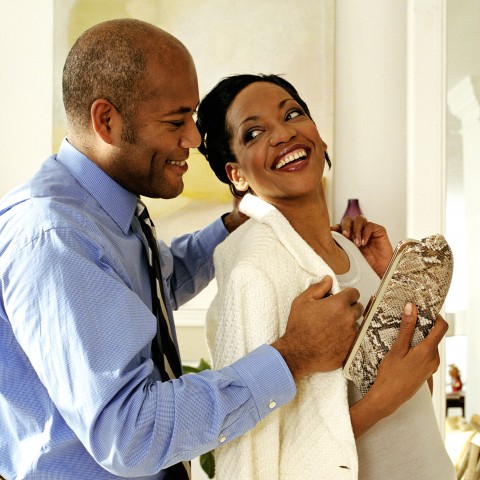
In Poland, it’s still common to see a man bowing slightly and showing a woman with a hand gesture that she should go first. It’s worth mentioning that some people consider “ladies first” to be chivalrous, but other people don’t like it and consider it sexist.
Speaking of, do you know what good Polish manners are? Click on the link to find out!
2. Hand Gestures
Poles use a lot of internationally known gestures such as “okay” or “thumbs-up.” There are also many Polish hand gestures that are specific to this culture.
A- The Kozakiewicz Gesture
Information and visuals about bras d’honneur
The Kozakiewicz gesture is one of the most offensive Polish gestures, and at the same time, one of the most well-known ones. It’s known as bras d’honneur in other countries, and it’s equivalent to the middle finger gesture. Be careful about using it, because people will very likely get angry with you!
The origins of its Polish name are quite interesting. The gesture was named after a Polish athlete, Władysław Kozakiewicz, who won in pole-vaulting during the Olympics in Moscow. He and other athletes from outside of the Soviet Union were booed by the audience due to political tensions. When he won the competition, he showed them this exact gesture in triumph.
You can learn more about Polish icons, including sports icons, in one of our lessons.
B- The Middle Finger
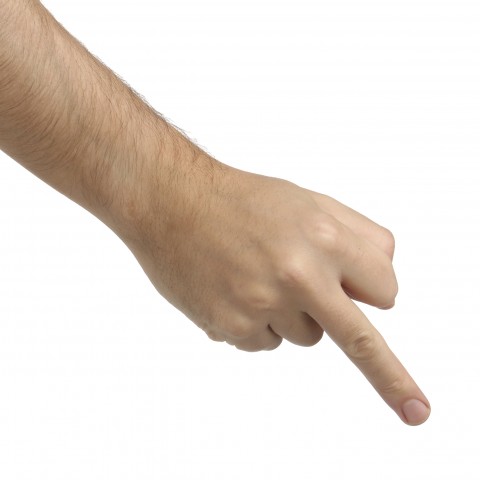
Another popular offensive Polish gesture is the middle finger. Polish people watch international TV and that’s how the hand gesture made its way into Polish culture. Initially, it was mostly young people who used it.
When someone shows someone the middle finger, we refer to it in Polish as pokazać faka. It’s definitely just as rude and offensive in Poland as it is anywhere else in the world.
C- Respect!
Tapping one’s chest with a fist is a gesture of respect and is often used to express a feeling of having bonded with someone. This gesture is mostly used by young people. It can sometimes be meant jokingly or ironically.
D- Fist Bumping
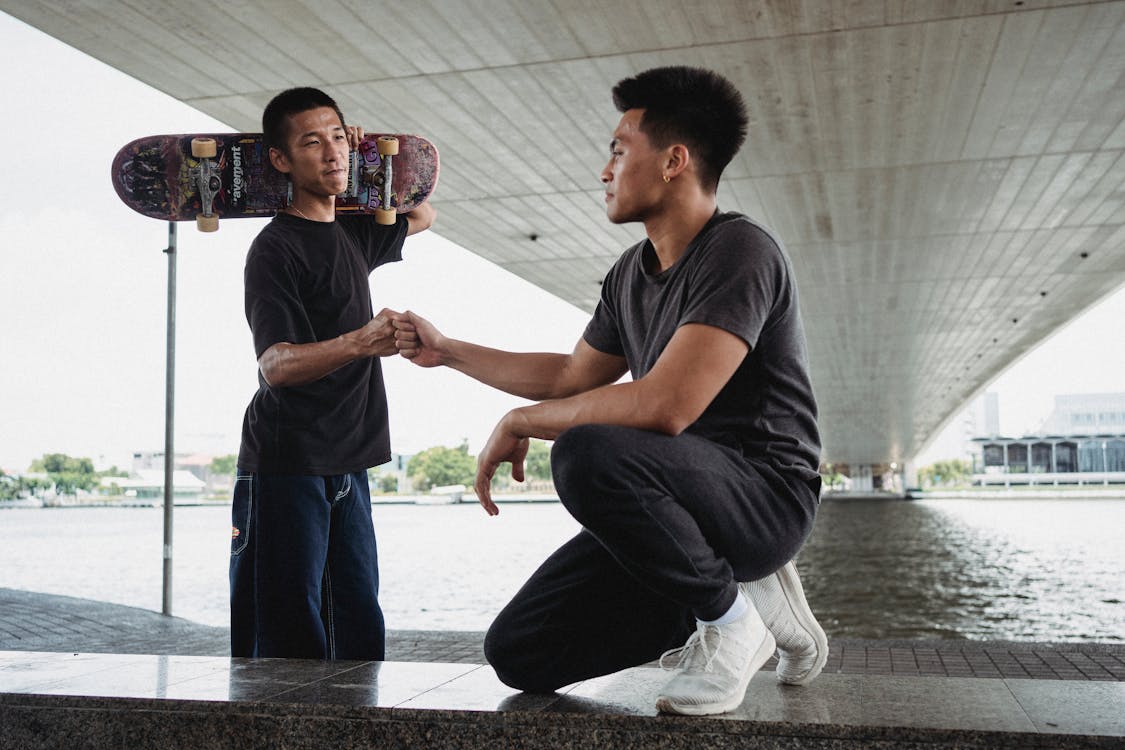
Young Poles often bump fists to say hello or to agree on something. They call it przybić żółwika, which loosely translates as “to seal a turtle.” Click on the link to learn more about Polish greetings among young people.
E- Counting
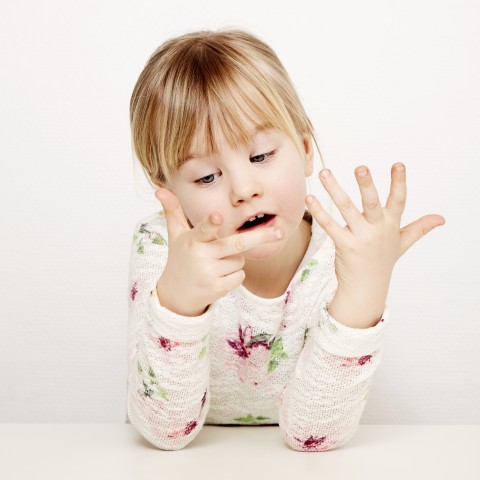
Like other Europeans, Poles count on their fingers starting with their thumb.
F- As Improbable as a Cactus on My Palm
When Polish people think something is improbable or difficult to believe, they say: Prędzej mi kaktus na dłoni wyrośnie. (It’s more probable that a cactus will grow on my hand.) Sometimes when they say it, they also point with one hand to an open, upward-facing hand to show where a cactus could potentially grow.
By the way, do you know the names of other important plants in Polish?
G- The Carrot Peeling Gesture

When Polish people want to mock or tease someone, they make the carrot peeling gesture. It’s also used to show someone that you’re the person who’s right about something.
The gesture looks exactly like peeling a carrot—the index finger of one hand is meant to be the carrot and the index finger of the other hand is like the peeler.
This one is used very often by children, who say zyg, zyg, marchewka (zyg zyg carrot) as they do the gesture.
H- Raising Your Hand
In Polish schools, children and teenagers raise their hands to get attention or to ask a teacher something. Polish people often put their index and middle fingers together when they do it. Later in life, they also use this gesture to indicate that they want to say something.
Our school years are an important part of life. How are your marks in Polish school? Check out this lesson to learn about Polish plurals.
I- Head Tapping
Poles tap their forehead with their index finger and say: Stuknij się w głowę! (Tap yourself on the head!) They use this slightly offensive Polish gesture when something or someone is particularly stupid or outragous.
J- Neck Tapping
Another one of the most typical Polish gestures is that of tapping one’s neck. This gesture refers to being drunk, wanting to get drunk, or commenting on someone who’s drunk.
Do you know how to say “I like beer,” in Polish? Learn how to talk about your likes and dislikes before your first drinking escapade in Poland.
K- The Fig Gesture

It’s time for the last hand gesture on our list. This is considered one of the more offensive Polish gestures, though whether it’s really offensive or not depends on the context. This gesture is called figa (fig) or figa z makiem (fig with poppyseed).
When Polish people insert their thumb between their index and middle finger in this gesture, it usually means that they don’t want to do something. Another situation in which it’s used is when someone is being clever, but what he hoped would happen didn’t.
3. Facial Expressions
In general, Poles express emotions such as happiness, unhappiness, disappointment, and anger with internationally understood facial expressions. However, there are a few Polish facial expressions that are more particular to this country.
A- Sticking Your Tongue Out

Making a funny face and sticking one’s tongue out can be used to show someone disrespect, as a joke, or to prove one’s point. This gesture is common in other countries, too.
The Polish twist is that children often reply to this facial expression by saying: Nie wystawiaj języka, bo Ci krowa nasika! (Don’t stick your tongue out or a cow will pee on it!)
If you don’t know other farm animal names, head over to our lesson on farm animals. They’re often mentioned in various sayings and proverbs.
B- Cocking a Snook

(Photo by ‘michael ely’)
Another common facial expression in Poland is cocking a snook. It’s often used as a sign of mockery and is particularly popular among children. It can be accompanied by sticking one’s tongue out or by adding the other hand to make the “trumpet” longer.
C- The Eyelid Pull

The eyelid pull is another facial expression that’s known in many places. In Poland, people also say the following phrase while doing it: Czy jedzie mi tu czołg? (Can you see a tank there?) Today, of course, tanks are just a part of Polish history.
This facial expression is used to show disbelief—and sometimes even annoyance—at the idea that someone thought we could believe something. It’s similar in meaning to one of the Polish hand gestures we mentioned earlier: the cactus on one’s palm gesture.
4. The Air Kiss
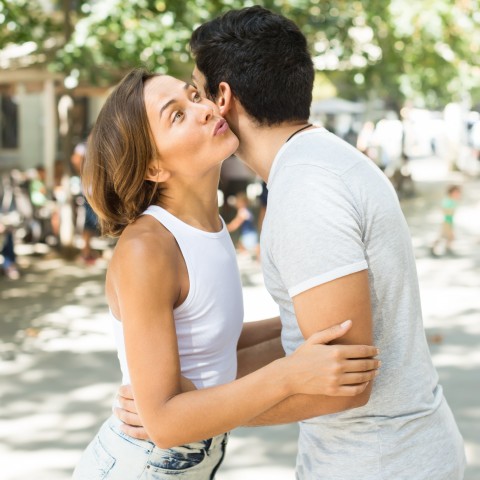
There’s one last thing we should mention: the Polish air kiss.
This greeting gesture is done when saying hello or goodbye to someone. To do this gesture, simply perform an air kiss next to someone’s cheek. Friends usually do one such “air kiss,” while family members more often do two.
You know what to do now, but do you know what to say when greeting people in Poland? Don’t forget to consult our lesson on basic Polish greetings.
5. Final Thoughts
In this blog post, you’ve learned a lot about body postures and gestures in Poland. With this information, you’ll be able to understand Polish people better and communicate more like a native Pole.
Naturally, knowing the body language of Polish people isn’t enough to make you a fluent Polish speaker. You need to develop listening comprehension and speaking skills as well!
To see a difference in your Polish proficiency level, create an account on PolishPod101.com. You’ll get access to recordings and lessons that will increase your listening comprehension skills, while vocabulary and grammar lessons will help you speak and tell people what you want. Join us today!










